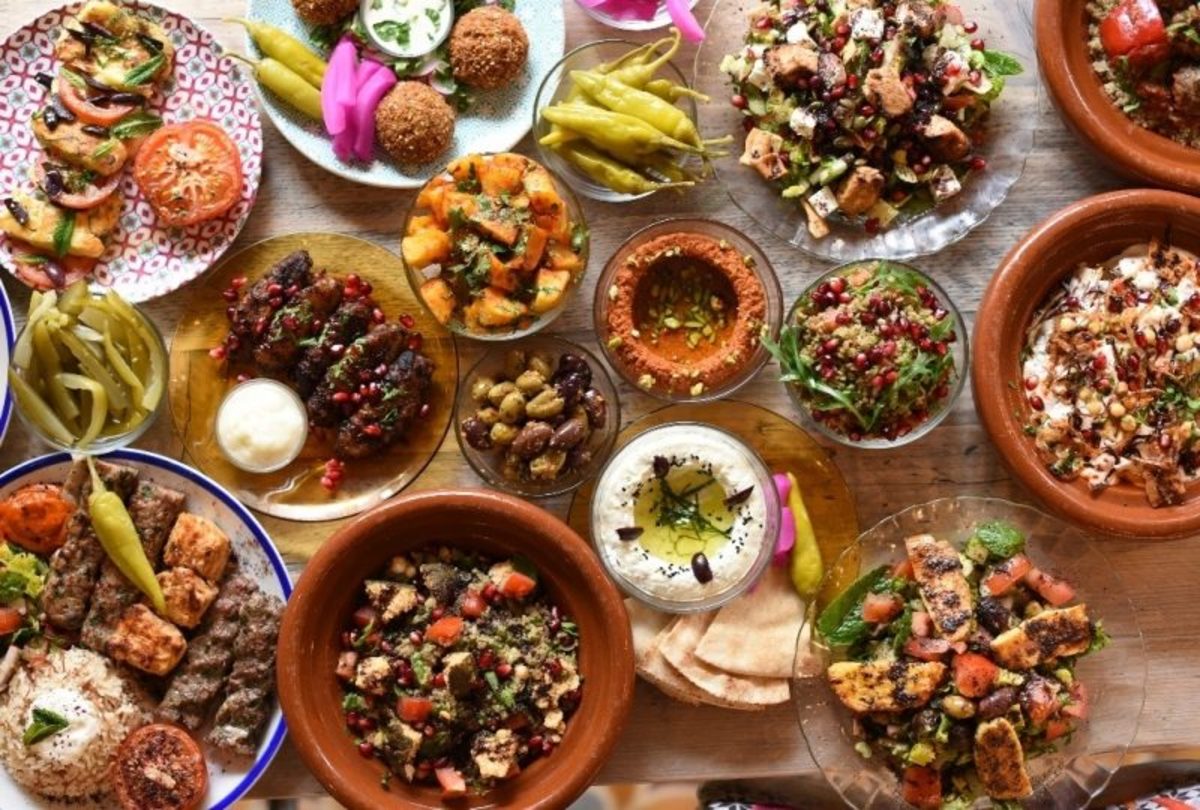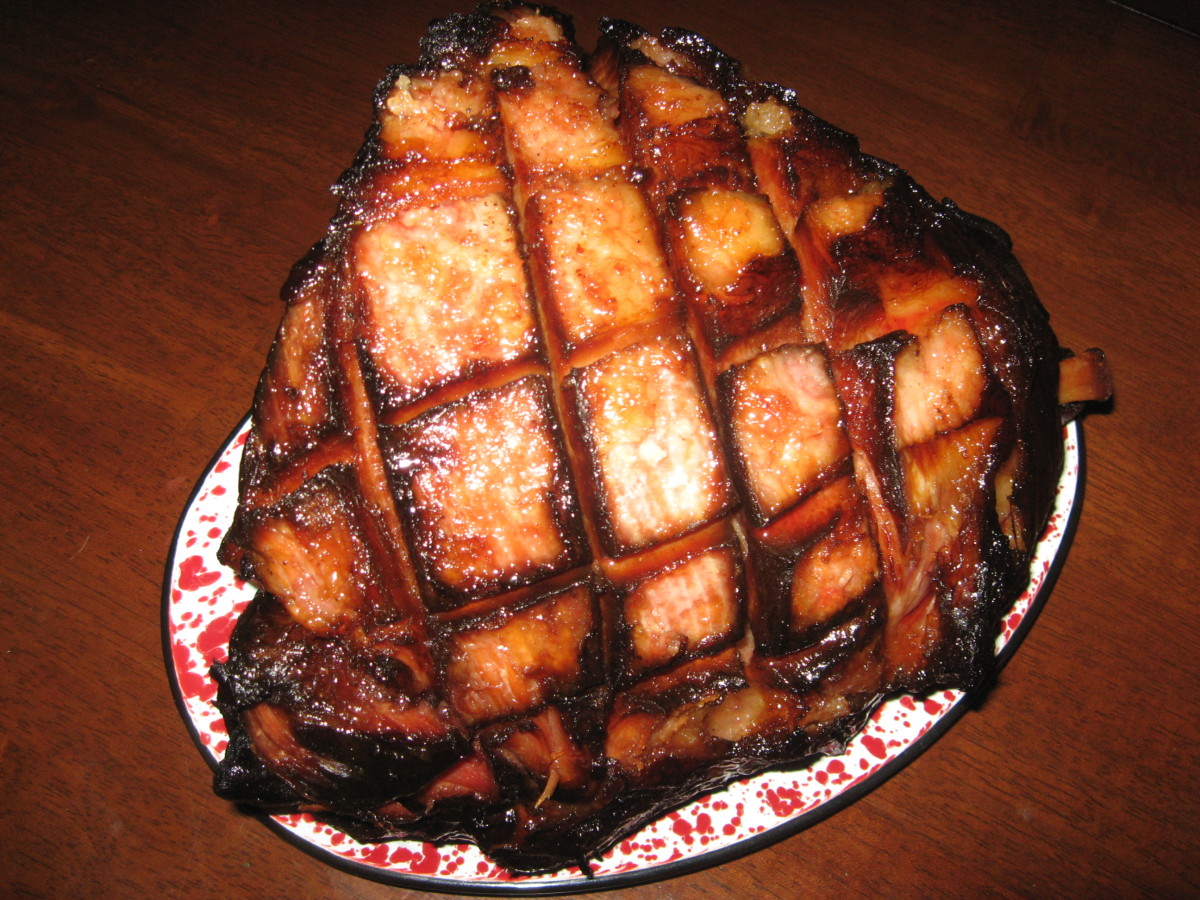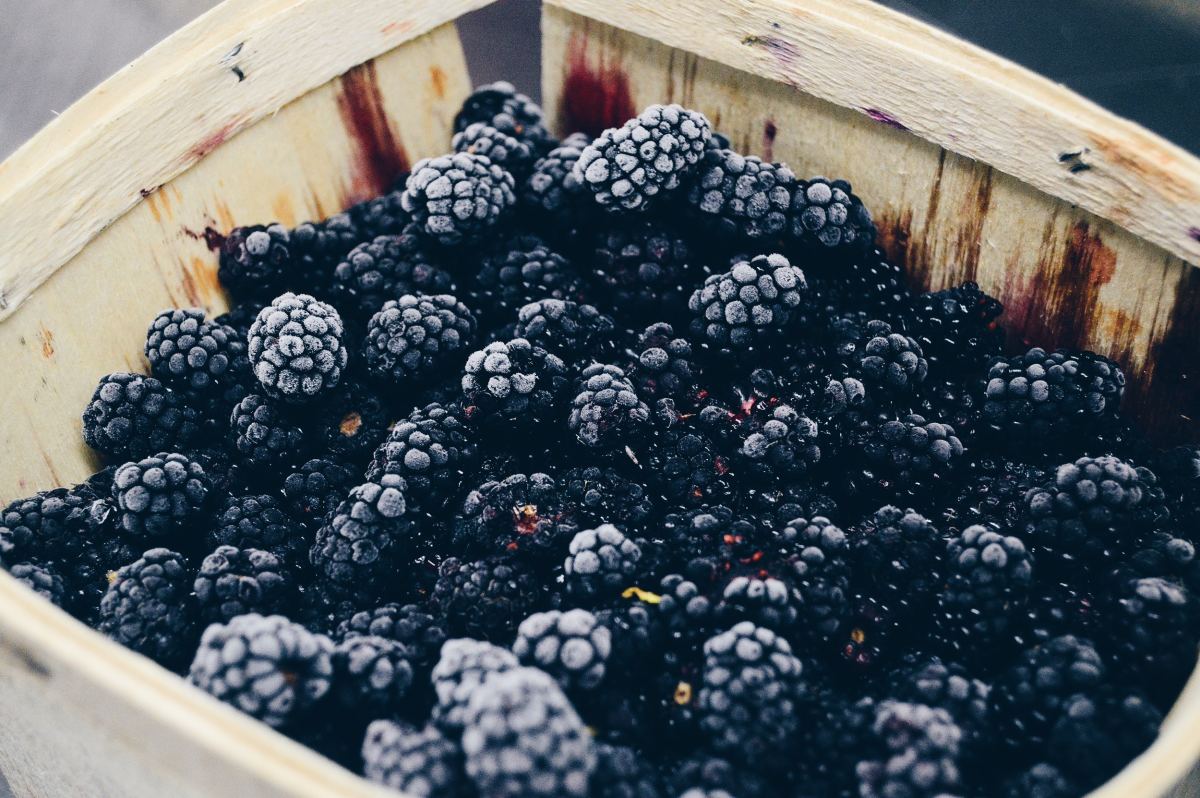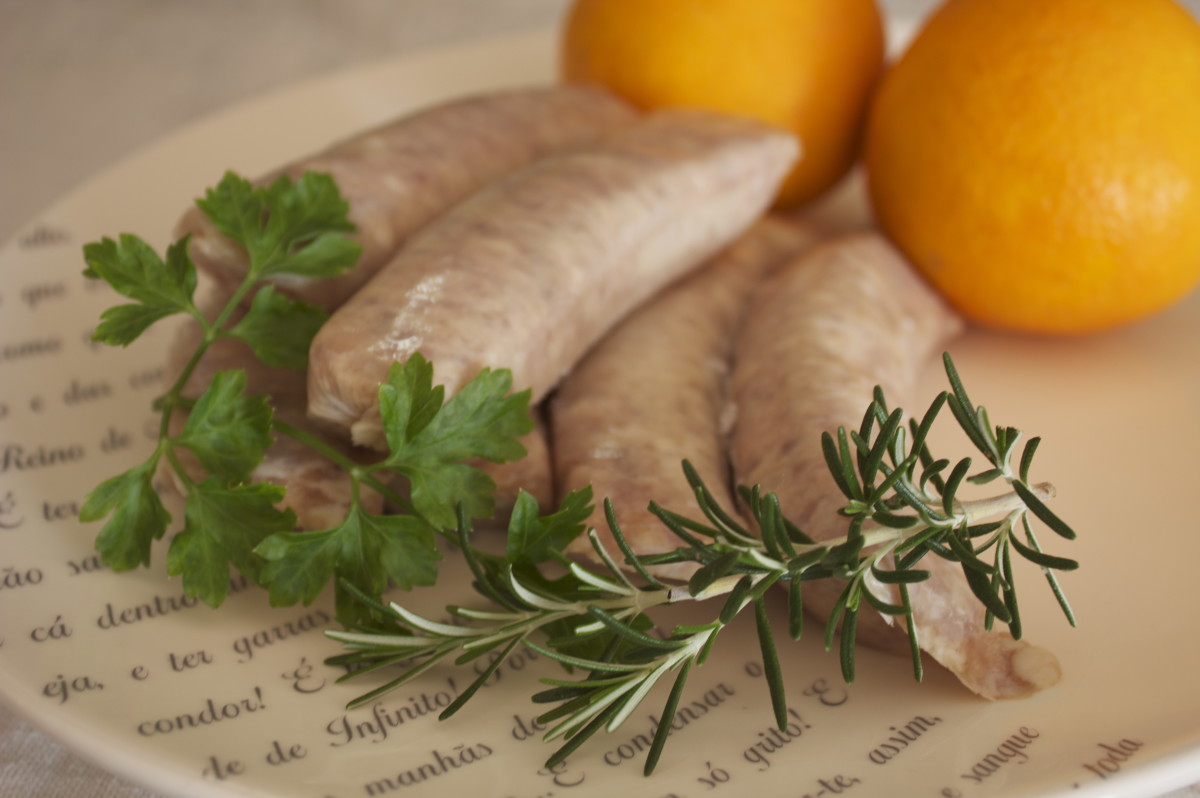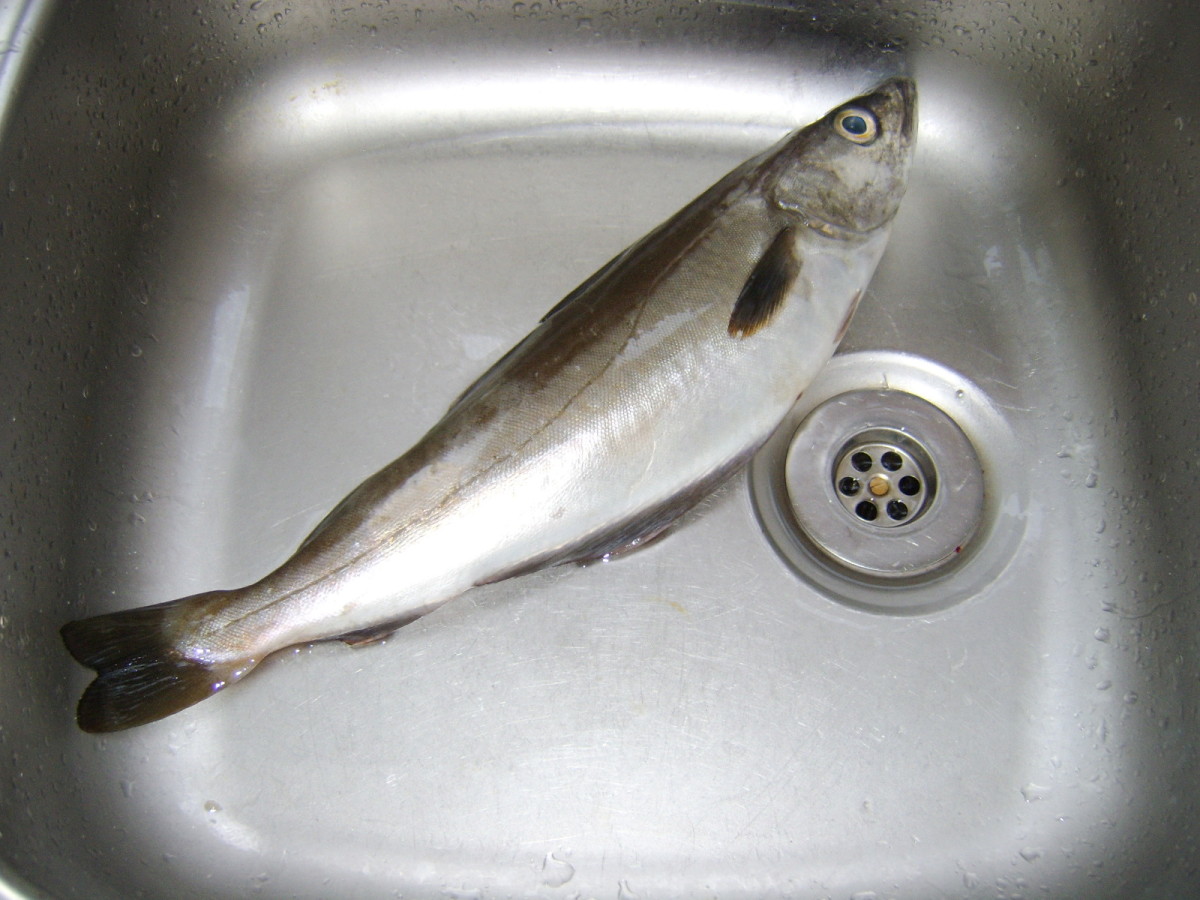The ABC’s of Middle Eastern cooking

Middle Eastern Flavours
Middle Eastern cooking styles are one of the most creative and enduring… Morocco, Egypt, Iraq, Iran, Syria, Tunisia, Turkey and the Arabian country's food come from rich and fertile coastal areas to dry and hot deserts. It’s cuisine in general falls under the category of “Mediterranean” cuisine, that heart-healthy combination of olive oil, fresh vegetables and fruit, cheese and moderate amounts of fish and poultry.
Influenced by dozens of cultures, its spicy dishes reflect the fact that the Middle East was either the source or the way station for spices that came to Europe from all over Asia. Herbs, typical of the Mediterranean, include oregano, parsley, coriander and the all time favorite, mint.

Fruits and vegetables of all types are available in the region and are used generously and with great flair. Fruit finds its way into many meat dishes where it adds a special exotic taste and dried fruits are much loved as well. Vegetables are highly regarded and are often served as main meals.
Middle Eastern meats include goat, beef, with lamb being the most loved while pork is rarely used as it is not acceptable to many religions of the region. Fish plays an important part in regions that have coastal areas, and inland rivers provide other places with fresh water species.

Aniseed: Anise is sweet and very aromatic, distinguished by its licorice-like flavor. Used to flavor the Arab liquor ‘Arak’ and a special hot tea called ‘Yansoon’. Best kept in an airtight tin.
Arak: Arab liquor with an anise flavor and ideal as an aperitif. Raki, zivania and ouzo are aniseed-flavored alcoholic drinks as well, related to arak and popular in Turkey, Cyprus and Greece
Babaganoush: smoky dip made of eggplant and Middle Eastern spices
Baharat or Bahrat: Persian name for a group of mixes, any of which may traditionally contain 4, 7, or 9 spices. Many families have private recipes for their blends; their personal favorites are made the same year after year. Used to flavor lamb and rice dishes.



Baklawa: Generic term for flakey pastry sweets, filled with crushed nuts, baked with butter or ghee and drenched in sugar syrup flavored with rosewater (varieties include the "flower-shaped" bokaj, squares of stuffed baked semolina called basma and fried nut-stuffed kataifi rolls called burma)
Borek: Pastries, flakey or bready, filled with anything from onion and potatoes to spinach, cheese, za'atar or mince. Eaten baked of fried
Bulgur (or burghul or ala): a precooked wheat, served in soups and cooked with meat (when it is known as kibbe).
Caraway: has an anise flavor and is widely used as a spice in cakes, biscuits and breads.
Cardamom: best stored in pod form because once the seeds are exposed or ground they quickly lose their flavor. In the Middle East, green cardamom powder is used as a spice for sweet dishes as well as traditional flavoring in coffee and tea.
Cayenne pepper: prepared from finely ground, small pungent chilies. Has a robust fresh fragrance and is medium on the heat range.
Chermoula: paste of middle eastern herbs and spices. Goes well in a variety of dishes whether they be roasted, baked, steamed pan fried or barbecued. Use chermoula as a marinade, a stuffing, curry paste, as a filling for bread scrolls or as a pasta sauce
Chilies: usually used fresh, but an emergency supply of dried chilies can be handy


Cinnamon: dried outer bark of the cinnamon tree, very common in many Middle East dishes. Buy in stick form and grind when needed.
Cloves: a sweet, pungent, astringent and strongly aromatic flavor. Buy whole cloves and grind them as called for; kep them in airtight containers away from direct light
Cous Cous: is made from Dhurum wheat and occasionally semolina or even barley. It is mostly found 'semi cooked' and is easy to steam and heat
Cumin: possesses a pungent, powerful, sharp, and slightly bitter flavor, but a warm and earthy aroma. By this in the seed form and ground, make sure that they are in airtight containers kept from light.
Coriander: versatile spice/herb since all parts of the plant are used in cooking and interestingly enough all parts taste different. Most often used in the powdered form, but buying it in the seed and pounding it when necessary is not difficult
Dill seed: The seeds are similar in taste to caraway, featuring a flavor that is aromatic, sweet and citrusy, but also slightly bitter. Used in cold dishes such as fattoush and pickles
Dukkah (or duqqa): blend of roasted hazelnuts, toasted sesame seed and spices. Served in a bowl, along with a plate of olive oil and pita bread.


Falafel: made with fava beans, chick peas or a combination of the two and flavored with spices both dried and fresh. Patty is fried before eaten and is crisp on the outside and soft and moist on the inside.
Fatteh: base of flatbread topped with various ingredients such as garlic yoghurt, chickpeas and pine nuts
Fattoush: Cucumber, purslane, watercress or wild oregano with tomato and fried Lebanese bread dressed with olive oil, lemon juice and sumac
Fennel: a Mediterranean seed that has a very special flavor and much loved in Middle Eastern food
Fenugreek: warm, slightly bitter taste, reminiscent of burnt sugar and maple. Not commonly used, but is a seed that should be kept. Buy in the seed form and grind when wanted.
Freekeh: a roasted green wheat with a smoky aroma and a nutty, toasted taste
Ginger: ginger powder is used as a spice for coffee; best kept in a dry airtight tin
Goureh: pickled sour grapes
Halvah: honey candy with a distinctive crumbly texture and very popular as a dessert served with coffee or tea.



Harissa: spicy sauce made from chilies and spices. Used to rub meats before roasting, or it can be mixed into the rich sauces used when stewing meats. Harissa is often paired with couscous .
Hummus: dip made of chickpeas, sesame paste, olive oil, lemon juice and garlic.
Kashtar: Lebanese clotted cream
Kataifi: Shredded, vermicelli-like pastry, used in Lebanese sweets
kibbe naye: tartare of pounded lamb mince served with onion and cracked wheat
Knefeh (or Kanafeh): sweet cake made of very fine vermicelli-like pastry eaten for breakfast or dessert.
Kofta: made by grinding meat, mixed with spices and formed into balls or cylinders for cooking
Labne: thick, drained yoghurt cheese made from cow milk
Limou Omani: dried Persian limes and delicious in many dishes. Available from specialist shops and Middle East grocers.
Ma'amoul: cookie liked, nut filled pastry.There are three kinds of ma’amoul fillings: walnut, pistachio and date.
Mezza: tapas of the Middle East. Mezza is a generous spread of small dishes, mostly eaten without cutlery, using flat bread, lettuce or vine leaves to scoop up dips or to wrap portions of colourful salads.


Manoush: Pizza rounds sprinkled with za'atar, mostly used as breakfast food. Perfect with fresh tomatoes and cucumber or labne
Mustard Seeds: usually the yellow and brown, both easy to obtain.
Nutmeg: nutty, warm and slightly sweet flavor, best purchased in the whole form and ground when wanted. Often used in Middle Eastern lamb dishes.
Orange Blossom Water: distilled water which has been infused with essential oil extracted from orange blossoms. The water has a rich citrus scent and a strong orange flavor and is found often in the sweet foods of the area.
Paprika: used a lot in the foods of certain countries. It is best to buy sweet Paprika.
Peppercorns: both white and black, purchased whole and ground when wanted… make sure to buy a good quality, you will be rewarded with the taste.
Pomegranate Syrup: a dark sweet sour syrup used in beverages, sauces, marinades, salad dressings and many other dishes

Poppy Seed: tiny, nutty seeds, typically used in baked goods, sometimes in savory dishes
Ranginak: a Middle Eastern Caramel-Date Cake
Ras el Hanout: king of spice mixes for the area and which can contain dozens of ingredients. Can be used to marinate meats or flavour couscous and is an important ingredient in bastilla (Moroccan pigeon pastry). It can also be used in stews.
Rose Water: used in sweet and savory recipes such as baklawa
Saffron: The pungent flavor and bright yellow stain of these dried crocus stamens appear in all kinds of traditional stews, and sometimes in desserts as well.
Sambusak: sweet-spiced lamb mince pastries
Sesame Seed: adds a nutty taste and a delicate, almost invisible, crunch to many dishes much loved in the Middle East




Shanklish: Cow – or sheep milk cheese balls rolled in za'atar
Sharwarma: grilled marinated lamb
Shish barak: thick yoghurt and rice soup filled with half-crispy pastry shapes stuffed with lamb and pine nuts
Shish taouk: marinated chicken kebabs
Soumach or Soumak: a red berry that is ground to produce a lemony powder, used a lot in the regions foods. With its sour flavor and dark red color, it adds piquancy to grilled foods, thinly sliced onions eaten as a relish, chicken, and fish dishes.
Tabil: spice mix made of garlic, coriander, caraway and cayenne pepper.
Tahini: sesame seed paste and the foundation of recipes like Hummus and Babaganoush
Torshi: pickled vegetables
Toum: Powerful paste of crushed garlic and oil, made like mayonnaise and similar to an aioli sauce
Turmeric: warm and aromatic with a warm undertone. It has been used in hot dry countries as both a taste and preservative. Best bought in powdered form.
Za'atar: A spice blend of dried thyme, sumac (or soumach) and sesame seeds. Used to flavor kebabs, chicken, feta cheese and as the distinctive aromatic topping on Middle eastern herb bread.

